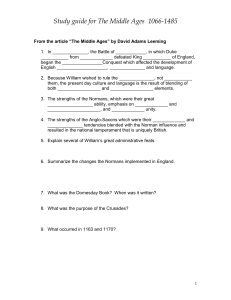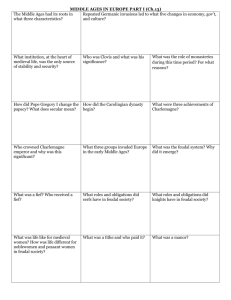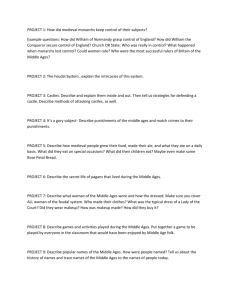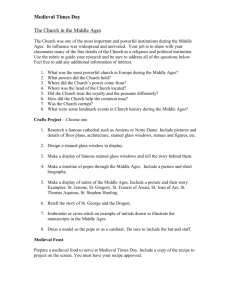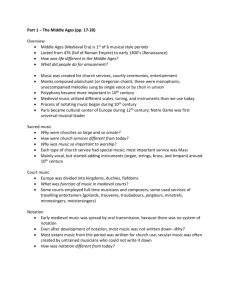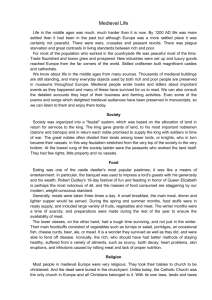C8.1 Medieval WP
advertisement
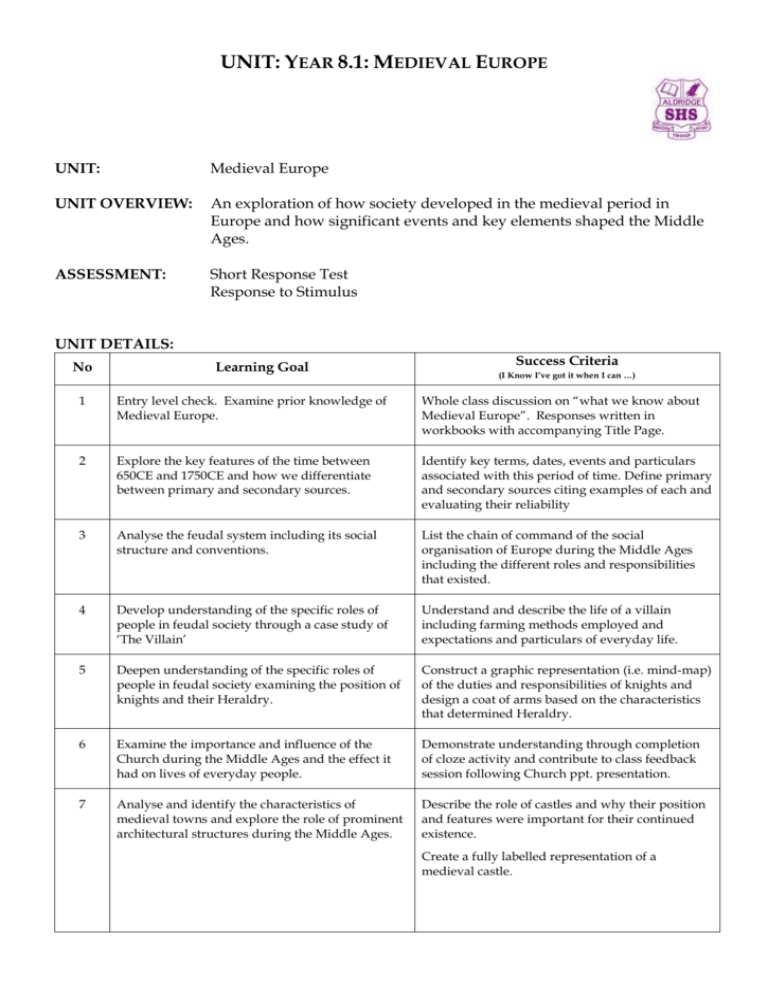
UNIT: YEAR 8.1: MEDIEVAL EUROPE UNIT: Medieval Europe UNIT OVERVIEW: An exploration of how society developed in the medieval period in Europe and how significant events and key elements shaped the Middle Ages. ASSESSMENT: Short Response Test Response to Stimulus UNIT DETAILS: No Learning Goal Success Criteria (I Know I’ve got it when I can …) 1 Entry level check. Examine prior knowledge of Medieval Europe. Whole class discussion on “what we know about Medieval Europe”. Responses written in workbooks with accompanying Title Page. 2 Explore the key features of the time between 650CE and 1750CE and how we differentiate between primary and secondary sources. Identify key terms, dates, events and particulars associated with this period of time. Define primary and secondary sources citing examples of each and evaluating their reliability 3 Analyse the feudal system including its social structure and conventions. List the chain of command of the social organisation of Europe during the Middle Ages including the different roles and responsibilities that existed. 4 Develop understanding of the specific roles of people in feudal society through a case study of ‘The Villain’ Understand and describe the life of a villain including farming methods employed and expectations and particulars of everyday life. 5 Deepen understanding of the specific roles of people in feudal society examining the position of knights and their Heraldry. Construct a graphic representation (i.e. mind-map) of the duties and responsibilities of knights and design a coat of arms based on the characteristics that determined Heraldry. 6 Examine the importance and influence of the Church during the Middle Ages and the effect it had on lives of everyday people. Demonstrate understanding through completion of cloze activity and contribute to class feedback session following Church ppt. presentation. 7 Analyse and identify the characteristics of medieval towns and explore the role of prominent architectural structures during the Middle Ages. Describe the role of castles and why their position and features were important for their continued existence. Create a fully labelled representation of a medieval castle. 8 Revise previous learning goals and evaluate the resources and notes obtained on the Middle Ages in preparation for the Short Answer Test. Read and analyse material. Solidify knowledge and understanding of subject matter. Complete the revision document in preparation for the short answer paper. 9 Explore the nature of crime and punishment in the Middle Ages. Identify typical crimes committed during the Middle Ages and punishments applied. 10 End of unit revision session to solidify knowledge of unit content prior to formal assessment. Completion of the End of Unit Quiz to gauge understanding of key concepts studied for Medieval Europe in preparation for Response to Stimulus Test 11 Completion of Response to Stimulus paperwork Fully completed planning sheets and Response to Stimulus Test



